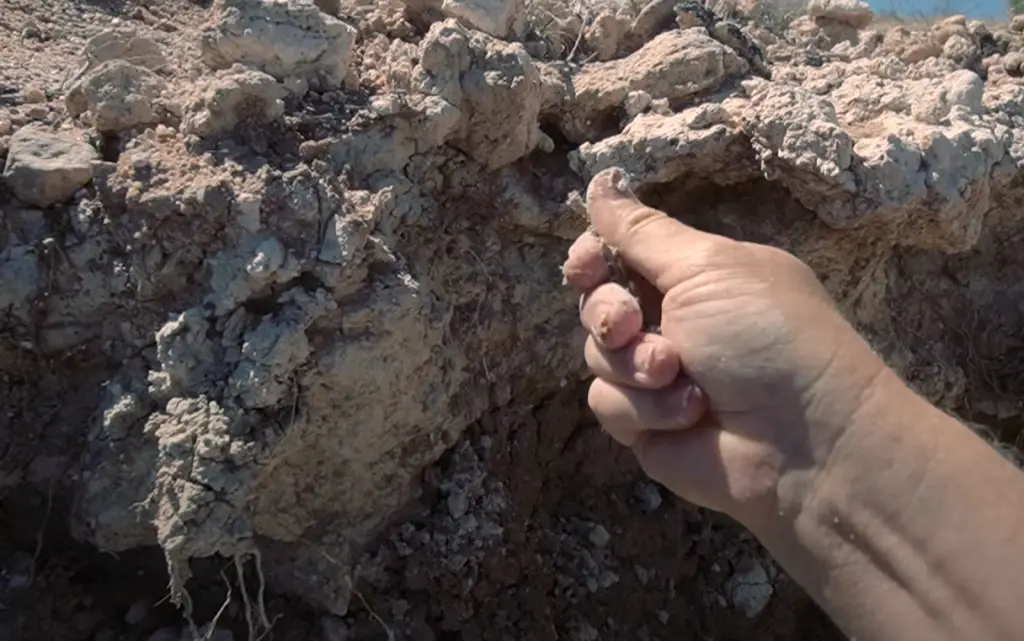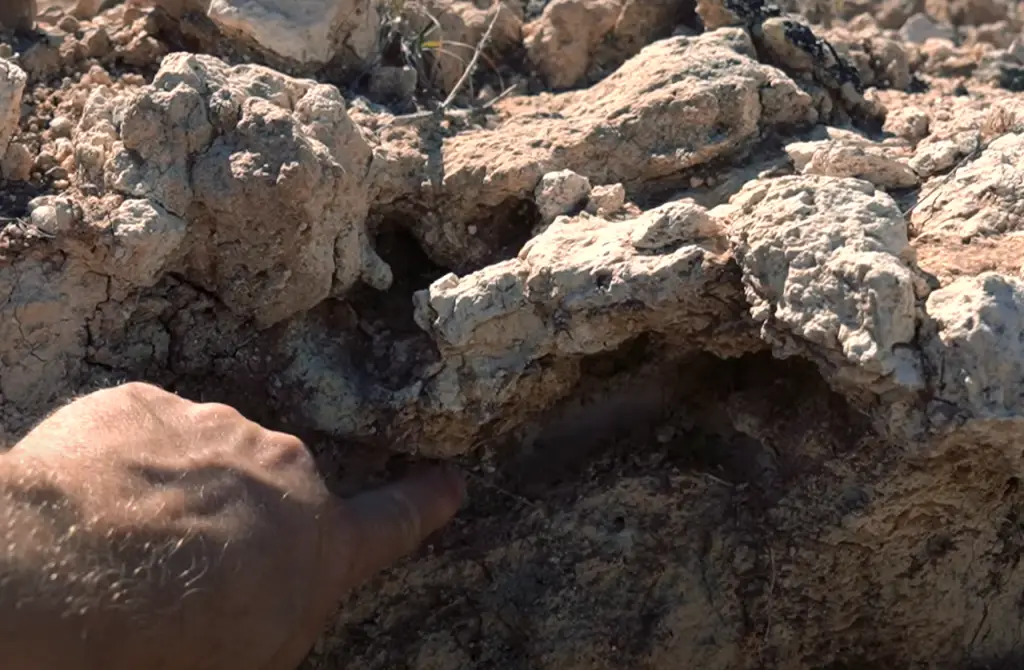Do you like to make pottery? Or maybe you just need some clay for a school project. Either way, learning how to find clay in your backyard can save you a lot of money. Clay is a natural resource that is found all over the world, and it’s pretty easy to get your hands on some if you know where to look. In this article, we will discuss the different methods for finding clay, as well as provide some tips on how to make the most of this valuable resource!
What is Clay?
Clay is a naturally occurring material that is found in many places around the world. It is often used in pottery and ceramics, as well as in construction and engineering. Clay can be found in many different colors, depending on where it is from.
Clay is made up of tiny particles of minerals that have been weathered down over time by the action of water and wind. The most common type of clay is kaolin, which is white or pale colored. Other types of clay include bentonite, which is often used in drilling muds, and fire clay, which can withstand high temperatures and is used in making bricks for furnaces.

Clay has a variety of properties that make it useful for different applications. It is a good absorbent, so it is often used in products like cat litter and cosmetics. It can also be molded into different shapes when wet and then hardened by firing in a kiln.
Clay is non-toxic however, some types of clay can contain high levels of lead or other toxins, so it is important to check the source before using it for anything that will come into contact with food or water.
Different Types of Clay
We have barely scratched the surface when it comes to all of the different types of clay that exist in the world. For our purposes, we will focus on six main types of clay: ball clay, stoneware clay, earthenware clay, fire clay, porcelain clay, and kaolin.
Ball clay
Ball clay is a type of clay that is commonly used in the ceramics industry. Ball clay is a fine-grained, highly plastic sedimentary clay, which typically forms in relatively deep, slow-moving water environments. It is usually white or off-white in color and it feels slippery when wet.
It is named after its use in the production of ceramic balls. Ball clay is also used in the production of porcelain, bone china, and stoneware.
Fire clay
Fire clay is a type of clay that can withstand very high temperatures. It is often used in the construction of fireplaces, furnaces, and other objects that need to be able to withstand high heat.
Stoneware clay
Stoneware clay is a type of clay that is mined from the earth. It is then processed and made into a variety of products, including bricks, tiles, and pottery.
Earthenware clay
Earthenware clay is a type of ceramic clay that is used to make pottery. This clay is made from a mixture of minerals, including kaolin and shale. Earthenware clay is usually found near the surface of the earth and can be easily excavated.
Earthenware clay is a to-go choice for beginners in pottery because it is easy to work with. This clay can be easily molded and shaped into a variety of forms. Additionally, earthenware clay is very forgiving, meaning that mistakes can be easily fixed.

Porcelain clay
Porcelain clay is a type of white clay that is named for its resemblance to delicate porcelain china. It is the most refined of all the clays and has the fewest impurities. Porcelain clay bodies are usually translucent when fired and have a very smooth surface.
One of the most difficult things about working with porcelain is that it shrinks more than other clays when it is fired. This makes it more likely to crack or break if it is not properly supported during the firing process.
Porcelain clay is also one of the most expensive kinds of clay, so it is not always the best choice for beginners. However, if you are interested in exploring all that porcelain has to offer, there are a few ways to get your hands on some without breaking the bank.
Kaolin clay
One of the most widely used types of clay is kaolin or white clay. It’s mostly composed of the mineral kaolinite. Kaolin is named after the Gao-ling village in China, where it was first mined. Kaolin is a very versatile clay. It can be used for pottery, ceramics, and porcelain. It’s also used as an additive in paper and paint production. Kaolin clay is incredibly soft and easy to work with. It doesn’t shrink when it dries, so it’s ideal for sculpture. [1] [2]
The Many Uses of Clay
Clay is a natural material that has been used for centuries to make everything from bricks and tiles to figurines and jewelry. Even today, clay is still being used in a variety of industries, including construction, cosmetics, and pharmaceuticals.
Pottery
One of the most popular uses for clay is pottery. Pottery can be made by hand or using a pottery wheel. Once the desired shape has been achieved, the pot is then fired into a kiln to harden it.
Clay pots are not only used for decoration but also for cooking and storing food. They can be used to bake bread, cook stews, and even roast meats. Clay pots can also be used to store oil, vinegar, and other liquids.
If you’re interested in trying your hand at pottery, there are a few things you’ll need to get started. First, you’ll need some clay. You can purchase clay from a craft store or online retailer. Be sure to get non-toxic clay that is safe for cooking.
Next, you’ll need some pottery tools. These can also be purchased from a craft store or online retailer. You’ll need a few basic tools to get started, including a pottery wheel, kiln, and clay modeling tools.

Finally, you’ll need a place to work. If you don’t have a lot of space, you can set up a small workspace in your garage or basement. You’ll also need access to running water and an electrical outlet.
Now that you have everything you need, it’s time to start creating! Pottery is a fun and rewarding hobby that anyone can enjoy.
Construction
Clay can be used for more than just pottery. It is also a major component in the construction industry.
Clay bricks are one of the most common building materials. They are made by molding clay into the desired shape and then firing them in a kiln. Clay bricks are strong and durable, making them ideal for both residential and commercial construction.
Clay tiles are another popular building material. They can be used for flooring, roofs, walls, and more. Clay tiles are available in a variety of colors, shapes, and sizes to suit any project.
Clay is also used to make adobe, which is a type of mud brick that is commonly used in hot climates. Adobe is made by mixing clay with water and then shaping it into bricks. Once the bricks are dry, they can be used to build walls and roofs.
Clay can also be mixed with straw to create a lightweight material called wattle and daub. This mixture was traditionally used to fill gaps between timber beams in walls.
Nowadays, clay is still being used in the construction of both commercial and residential buildings. Clay bricks are prized for their durability, beauty, and eco-friendly qualities. In addition, clay tiles are becoming increasingly popular as a roofing material due to their longevity and energy efficiency.
If you have ever driven by a construction site, chances are you have seen workers using clay. Next time, take a closer look and see if you can spot any of the many uses for this versatile material.
Plant growing
Clay can be used in many different ways in the garden. It can be used as mulch, to make pottery or as an amendment to improve drainage and aeration in heavy soils. One of the most popular uses for clay is adding it to compost piles. This helps increase the rate at which organic matter breaks down and also adds essential nutrients and minerals to the finished compost.
If you have pets, you may want to consider using clay as a natural dewormer. When ingested, clay will help to absorb toxins and parasites in the digestive tract. You can add a small amount of clay to your pet’s food or water bowl each day to help keep them healthy and free of worms.
Finally, if you have problems with slugs or snails eating your plants, you can try creating a barrier around the plants using a mixture of equal parts flour and dry clay. The slug or snail will be attracted to the moisture in the flour but will get stuck when it tries to cross the dry clay. This barrier can be reapplied after each rainstorm or watering session. [1] [2]
Can Clay Be Found in the Backyard?
Clay is found all over the world. It is usually found near water sources such as rivers, lakes, and oceans. Clay can also be found in deserts and other dry areas. But can clay be found in the backyard? The answer is yes! Clay can be found in many places in the backyard.

Clay is a type of soil that is made up of tiny particles of rocks and minerals. Clay is usually found near water sources because it is created by the weathering of rocks. When rain falls on rocks, it breaks them down into smaller pieces. Over time, these small pieces become clay particles.
How to Find Clay in Your Backyard
Now that you know that clay can be found in the backyard, you may be wondering how to go about finding it. In this section, we will share some tips on how to find clay in your backyard.
Look for natural clay deposits
One of the best ways to find clay in your backyard is to look for natural clay deposits. These can be found in many places, including riverbanks, lakeshores, and hillsides. If you live in an area with a lot of rainfall, you may also find clay deposits in your backyard after a heavy rainstorm.
Luckily, most soils contain at least a small amount of clay. This means that you probably don’t have to go far to find some. However, hunting for clay is a dirty job, so be sure to wear old clothes and gloves when you go looking for it.
Once you’ve found a likely spot, it’s time to start digging. Be sure to dig down at least a foot or two to give yourself plenty of clay to work with. You may want to bring a shovel or spade with you to make the job easier. Be sure to wear old clothes and gloves to protect yourself from the mud.

Go out of your backyard after rainfall and look for the areas that are lingering with water. More often than not, these will be the areas where clay is present. If you see an area that’s particularly muddy, there’s a good chance that there’s clay beneath the surface.
Look for wild clay
If you have no luck finding clay deposits in your backyard, you may want to try looking for wild clay. Wild clay is found in many places, but you will encounter it more often on river banks and construction sites.
When looking for wild clay, it is important to remember that it is often mixed with other materials such as sand and gravel. This means that you will need to sift it before using it in your pottery.
Harvesting your clay
So you’ve found some clay, now what? The next step is to harvest your clay. This can be done by hand or with a machine, depending on the amount of clay you have. We will cover dry and wet harvesting methods, as well as how to store your clay once it has been harvested.
Wet harvesting method
Wet harvesting is the most common method of harvesting clay. It is also the easiest method, as it does not require any special equipment.
To wet harvest your clay, simply dig up the soil deposit and place it in a bucket or wheelbarrow. Then, add enough water to cover the clay and mix it for a while. Next, allow the soil to settle. Rocks and sand will stay at the bottom while the clay will sit in the water.
Once the clay has settled, you need to take a soft cloth and filter out the clay. You can do this by placing the cloth over a second bucket and pouring the water through it. The clay will stay on top of the cloth while the water drains through.
After all of the water has drained, you can remove the cloth and let it air dry. Once it is dry, you can store it in an airtight container until you are ready to use it.
Dry harvesting method
For the dry harvesting method, you too need to gather soil from the area where there is a high chance of finding clay. The best time to do this would be during summer or autumn as the soil is drier then. Once you have enough soil, put it in a clean container and let it dry completely.
After that, you can start sifting the clay. The process is pretty simple, all you need is a fine-mesh strainer and a bowl or container to catch the clay. Put the strainer over the bowl and pour a small amount of soil into it. Gently shake the strainer so that the clay falls through while the larger pieces of debris are left behind. Repeat this process until you have collected all of the clay.
Processing the clay
Once you have collected your clay, it is time to prepare it for use. This process is called “processing” and it involves removing any impurities from the clay.
The easiest way to process the clay is simply to dry it out completely and then grind it into a powder using a mortar and pestle.
[1] [2]FAQ
Where can you find natural clay?
To find clay in your backyard, start by looking for sources of water like streams or ponds. Then, look for areas where the ground is dry and cracked. Finally, check areas that get a lot of sun exposure. If you see any white or grayish-colored rocks, these may be clues that there is clay nearby.
Once you’ve found a likely spot, dig down about six inches to see if you can find any clay deposits.
How can you identify clay?
Clay is a natural material that is found in many places around the world. The best way to identify clay is by its color. Clay typically ranges in color from white to red to black.

If you’re having trouble finding clay in your backyard, there are a few things you can do to increase your chances of success. First, try digging in areas that receive direct sunlight for most of the day. Second, look for areas of your yard that are moist or have recently been wetted by rain or snowmelt. Finally, consider using a metal detector to help locate clay deposits beneath the surface of your yard.
With a little patience and perseverance, you should be able to find plenty of clay in your backyard that
How do you find clay on land?
The easiest way to find clay is to look for deposits of sedimentary rocks. These are rocks that have been formed by the accumulation of small particles over time. One of the most common types of sedimentary rock is limestone, which is often found in marine environments. Clay can also be found in other sedimentary rocks such as sandstone and shale.
Where can I find clay near me?
The best way to find local sources of clay is to contact your state’s geological survey. They can provide you with maps and information about where to find deposits of clay in your area.
You can also look for places near the water where riverbanks or other areas have been eroded. This can expose clay deposits that you can then mine for your own use.
Another option is to search for old abandoned clay pits. These are often located on the outskirts of towns and cities and may be overgrown with vegetation. However, they can still be a good source of clay if you can find them.
Useful Video: How To Find Natural Clay For Primitive Bushcraft
Conclusion
Clay is an incredibly versatile material with a wide range of applications. The best way to find clay is to look for an area of your yard that is wet and has a lot of mud. If you live near a river or lake, this will likely be the easiest place to find clay. Once you have found an area with clay, you can start digging! Be sure to wear gloves and old clothes when digging, as clay can be very dirty. Abd after you have dug up some clay, take it inside and let it dry out completely. Thanks for reading and good luck on your clay-hunting adventure!
References:
- https://thehobbykraze.com/observational/nature-sustainability/how-to-find-clay-in-your-backyard/
- https://www.backyardcaring.com/how-to-find-clay-in-your-backyard/










Leave a Reply
View Comments